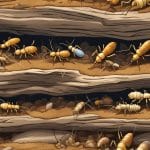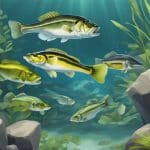Types Of Zooplankton
Plankton is an organism that moves freely in the water, it is made up of tiny plants (phytoplankton) and tiny animals called zooplanktons. Zooplankton is a category under which come different types of zooplankton.
Some of the types of zooplankton include the immature or larval stages of large animals such as snails, squids, crabs, lobsters, sea stars, fish or jellyfish. Some zooplanktons are single-celled animals such as radiolarians and foraminifera, and some are tiny crustaceans like Daphnia. Zooplanktons are sea animals that cannot swim, and they move in the sea through its current. Mostly the zooplanktons are found in deep water under the sea, and they vary in size from microscopic to jellyfish size. Mainly there are two types of zooplankton, one is holoplankton which will always remain zooplankton and is permanent. The other type is meroplankton which is made up of the larva of small marine animals such as fish or crabs. But these are not permanent and if they survive they can be grown into free-swimming animals called nekton. Holoplankton is one of the types of zooplankton which remains same throughout their life cycle. This type includes diatoms, amphipods, krill, copepods, salps and many others. Holoplanktons possess unique traits in reproduction, and both sexual and asexual production takes place among them. The common types of zooplankton are jellyfish with big stomachs and long tentacles. Their tentacles have stringers that allow them to catch food and carry it to their stomachs. Then by pumping their stomachs these jellyfish move in the water up and down and the current of the water let them travel side by side. Copepod is another type of zooplankton, called as the sea insects because they are thousands of them in the sea. These can be found in salty or fresh water and are very small (few millimeters long). They have two antennas, a segmented body and a shell and their antennas help them move around the water. Diatoms included in the types of zooplankton which are single celled phytoplankton which appear individually or in long chains and are important oxygen producers.
These small creatures still have a lot of power to defend and shield themselves. The holoplanktons because of having a small size and lethargic swimming ability, have adapted some of the special defenses. Their flat bodies, oil droplets, spines, floats filled with gases and sheaths made of gel like substance are all part of the adaptations. The types of zooplanktons have developed the ability of developing transparent bodies, bright colors, bad tastes and cyclomorphosis. This cyclomorphosis allow the zooplanktons to shield and protect themselves when the predators drop some chemical to signal zooplanktons. The other class among the two types of zooplankton is meroplankton, these are the organisms which are platonic for their earlier stages of life (larval stages) and they spend their adult life on the reef. They feed upon other members of plankton or on the egg yolk which they have retained from the eggs they hatched from while they are living in the plankton. Some of the animals included in this type are sea urchins, sea stars and other sea worms.






